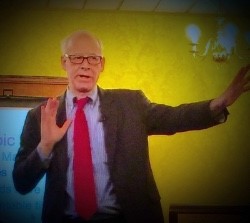“Most assignments were written before the internet,” according to Alan November, an international leader in educational technology who spoke this week to OSU faculty and staff on “Who Owns Learning?”
November challenged attendees to reconsider the way they teach and the way they think about how students learn. Highlights of his presentation can be summed up in the following tips. Continue reading
